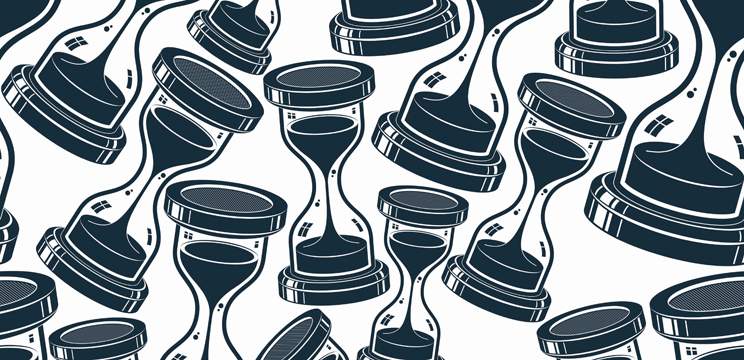Since first published in the poem “Piers Plowman” (attributed to William Langland) in the 14th century, we’ve all had it drilled into us since childhood that “patience is a virtue.” What is striking to me about patience is that we’ve at all needed to be “told” of its importance. It’s as though we, especially in modern, Western society, need to be convinced—we need proof that patience figures large in our lives. Patience somehow has accrued a reputation of a “nicety” among positive attributes—a sense of it being desirable, but not crucial to “success” in our Western Times-Square-meets-Wall-Street world. Patience is great, but other qualities that drive it home, seal the deal and score points are preferred.
In a time of trumping rivals and compulsively keeping up with the joneses, to be patient suggests coming in second, or perhaps dead last. Patience is not overt—it does not put a person on display. There’s little in terms of a Tony Robbins-styled inner “power” to it. In a word, patience can seem “weak.”
The Merriam-Webster dictionary defines patient as “able to remain calm and not become annoyed when waiting for a long time or when dealing with problems or difficult people.” There isn’t much nuance to this definition. Though it sounds great to “remain calm” (I’m thinking of someone yelling this at people during a stampede into an Apple store for the newest I-ware), and to “not become annoyed” in the face of “problems” or “difficult people,” there’s not much of a sense of what this is internally, let alone how it’s done.
Developing one’s skills for mindfulness IS how you build patience. In my own practice, and for those I work with as a clinician, there are three mindful components to building patience:
- Cultivating acceptance of what is actually here in the present moment
- Getting clear around the very real fact that everything changes, and …
- Not getting stuck on believing that you are separate, an “island unto yourself”
Patience may not be flashy, but it is crucial to well-being and effectiveness. And it’s not something only the Dalai Lama can do (i.e. notions of certain people having the “patience of a saint”). Patience is what modern psychological and brain science would support and it’s what you can do while you’re waiting for the next thing—the end of the meeting, your driveway at the conclusion of a long commute home from work, the salivation and smell of dinner served, the anticipation of a lofty goal’s attainment, and then sleep before dreams of a weekend’s diversions.
Impatience pulls the rug out from under our best and loving intentions, and seems to especially do so with those who matter to us most.
When we flare with frustration or anger at others at home (or wherever), or when we shut down and check out with loved ones, it’s because we’re losing touch with the above three aspects of what mindfulness practice teaches. Impatience pulls the rug out from under our best and loving intentions, and seems to especially do so with those who matter to us most.
Here are some suggestions for going beyond a passive view of patience, to making it the crucial skill it is—one that you actively build into your daily life.
Pause and Practice:
Do the following to work on building your patience “muscle”:
1. Ask yourself: Does your indignation toward another person feel good?
Does it make things more do-able and manageable? Does it boost or block up the mind? How might letting it fester and fly out of us negatively impact us and others? Basically, what are the costs of feeding your angry impatience?
2. Ask yourself: How might you learn something from this “transgressor”?
Without intending to, how might they be teaching you about the edges, the boundaries of your capacity for patience? You don’t have to like the pain they’ve set in motion for you, but are you willing to be at all grateful for this opportunity to expand your patience and capacity for well-being?
3. Make your goal of riding out reactive urges or impulses public to others.
Make yourself accountable for practicing patience.
4. Stack the deck
Try not to put yourself in situations where you’ll need to resist urges or fight impulses when you’re fatigued and depleted. Rely on rituals and routines for times when you’re likely to be fried and impatient (e.g. bedtime for families with young kids).






